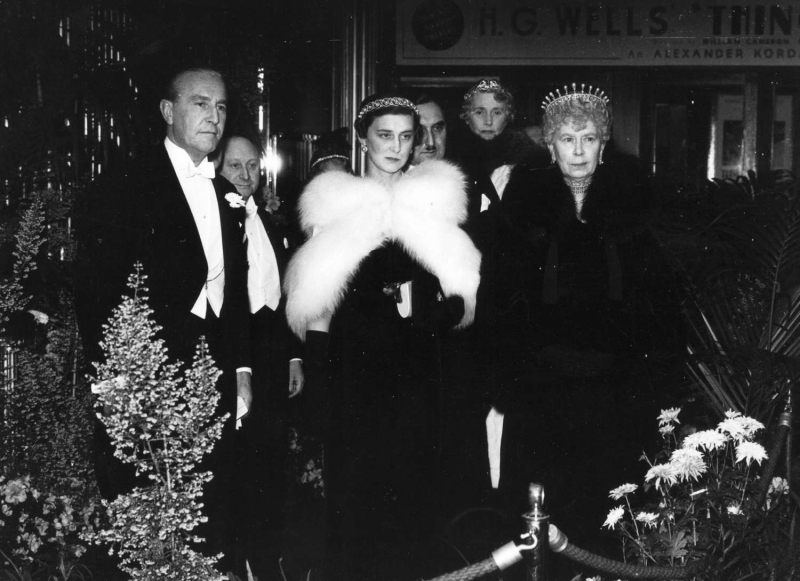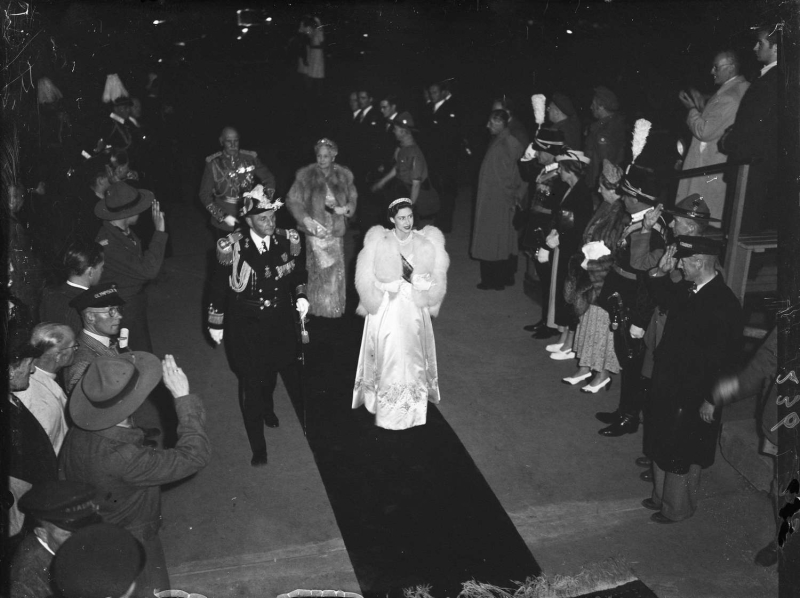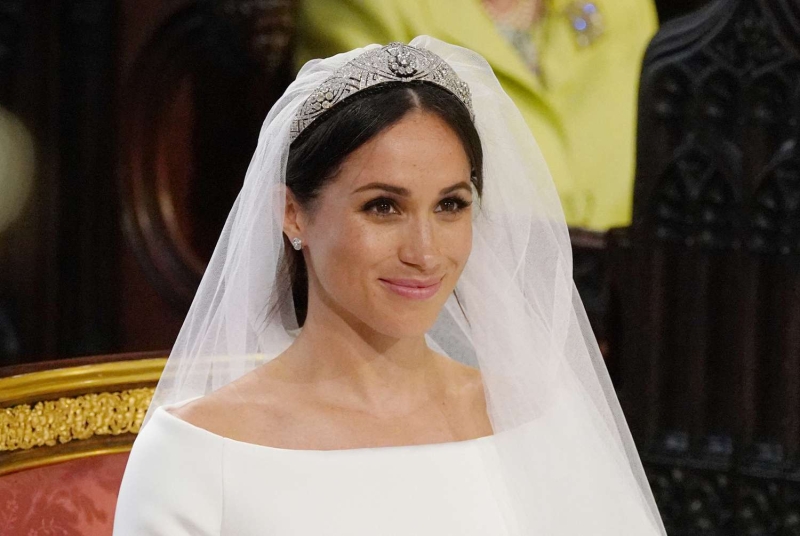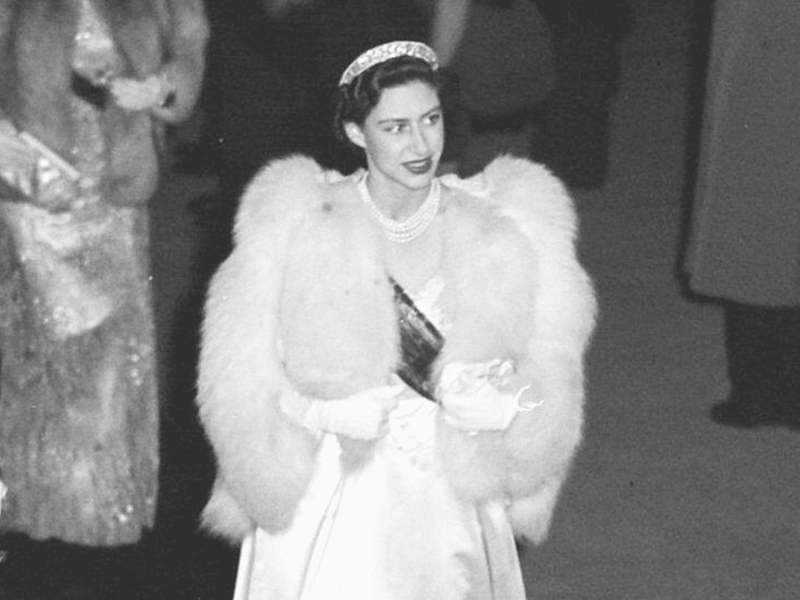Here's the real story behind the priceless Cartier design.
The story behind Queen Mary’s Diamond Lozenge Bandeau has all the makings of a good detective novel: priceless diamonds, royal intrigue, and a good ending.
Last worn by Princess Margaret of the British Royal Family, experts have considered the tiara “missing” since the mid-60s when it vanished from public view. Speculation on its whereabouts ranged from rumors of a private sale to theories that it was still locked away in the royal vaults, but no one knew for sure. Now, we may finally have an answer to the decades-long puzzle.
Saad Salman, Founder and Editor of The Royal Watcher, reported that Queen Mary’s Lost Diamond Lozenge Bandeau and Queen Azizah of Pahang’s Diamond Bandeau Tiara are actually one and the same. It seems the Cartier creation wasn’t lost. It just had new royal owners.
“This Cartier Diamond Lozenge Bandeau Tiara was acquired by Queen Azizah of Pahang in the late 1980s, at the advice of Princess Chulabhorn of Thailand, who bought the Tiara and shipped it over from New York,” explains Salman to InStyle. “While I had some suspicions on both being the same piece over the past few months, it wasn’t until I attended the Wedding in Pahang last month that I was able to compare every detail, and told the Queen that it may be the same piece.”
The royal wedding in question—that of Prince Muhammad of Pahang, Tengku Arif Bendahara, the son of the Sultan of Pahang and Tengku Ampuan (Queen) Azizah—gave Salman time to examine the design. Though slightly altered from its original form, the similarities were unmistakable, including an intricate diamond lozenge pattern, flawless pearls, and Cartier markings, according to the royal watcher.
“From one Queen to another, there is no doubt the Tiara will continue to be part of royal collections for years to come," adds Salman. This new addendum to the tiara’s long history only adds to its glamour and intrigue—and royal fans everywhere will no doubt appreciate its return to the spotlight as much as its provenance. But there’s much more to the story. Read on for the entire century-long timeline of Queen Mary’s lost diamond bandeau.

The Original Cartier Design
Framed by rows of diamonds and seed pearls, the distinctive tiara features a showstopping “lozenge” pattern of diamonds in an intricate setting. It’s also a bandeau-style headpiece, setting this Cartier gem apart from the many diadem and crown styles in the British royal archive. A bandeau is a “headband-style ornament of low profile, usually without a graduation in height from one side to the other, most often worn on the forehead, and prevalent during the early 20th Century,” according to a report from Christie’s Auction House.
While its full backstory remains unknown, faint Cartier maker's marks on the tiara suggest that Queen Mary, the mother of Queen Elizabeth II and Princess Margaret, likely commissioned it in the early 1910s at the tail end of tiaras' peak popularity.
Naturally, the piece reflects the shifting aesthetics of this period. Just before the First World War, art Deco had yet to fully supplant the Belle Epoch's complex floral motifs and penchant for curves. But, you can see the beginnings of the architectural and angular designs that would define the roaring '20s in this tiara's signature geometric setting. On the other hand, the crown of pearls, which would be later removed, represents a nod to the preceding Art Nouveau movement, making it the perfect marriage of two of the jewelry world's most influential eras.
This isn’t the only collaboration between the British Royal Family and Cartier. King Edward VII dubbed the French designer “the Jeweler of Kings and the King of Jewelers” after issuing the jewelry house a Royal Warrant in 1904. According to Salam, the most famous Cartier creation is the Cartier Halo Tiara worn by Catherine, Princess of Wales at her wedding.

The History (and Mystery) of the Diamond Bandeau
The mystery around Queen Mary's bandeau all started with its still murky origins. "From what we have been able to determine, this Cartier Diamond Lozenge Bandeau Tiara was worn by Queen Mary in the 1930s before being given to Princess Margaret around the time of her 18th birthday in 1948," says Salman.
It made its first public appearance at the royal film premiere of The Ghost Goes West at London’s Leicester Square Theatre in 1935. There, Queen Mary debuted the piece “topped with pearls taken from either her Girls of Great Britain and Ireland Tiara or the Lover’s Knot Tiara,” says the royal expert. She also sported the tiara at a Gala Performance of the Comedie Française at the Savoy Hotel in 1939.

In 1948, an 18-year-old Princess Margaret donned the royal heirloom for a showcase at the Olympic Stadium in Amsterdam following the inauguration of Queen Juliana of The Netherlands—this time sans pearls. She later wore the bandeau during the Dutch State Visit to Britain in 1950 and the Danish State Visit to Britain in 1951, supporting the royal expert’s claim that it was an 18th birthday gift from the Queen Mother.
However, after just a few rare outings in Princess Margaret's career as a working royal (many of which notably featured foreign dignitaries from The Netherlands), it disappeared from public view in the mid-1960s. And thus, the diamond hunt began.

Other Lost Jewels
Thanks to Salman's sleuthing, the Cartier Lozenge diamond mystery has been mostly solved. But The Royal Watcher founder contends that there's still plenty of royal intrigue to be found amongst the crown jewels.
“The British Royal Family have a couple of ‘lost’ heirlooms which have not been seen in decades,” he explains. “Recent appearances of Queen Mary’s Diamond Bandeau on the Duchess of Sussex, the Greville Emerald Kokoshnik Tiara on Princess Eugenie, and the Strathmore Rose Tiara on the Princess of Wales among a host of new delights worn by Queen Camilla have given us hope.”
But one piece remains elusive. “I’d love to see Maria Feodorovna’s Sapphire Bandeau reappear again,” shares Salman, adding that its “fate is as mysteriously unknown as the Lozenge Bandeau.” Here’s to hoping its story is as full of twists and turns as Queen Mary’s missing diamond tiara.

